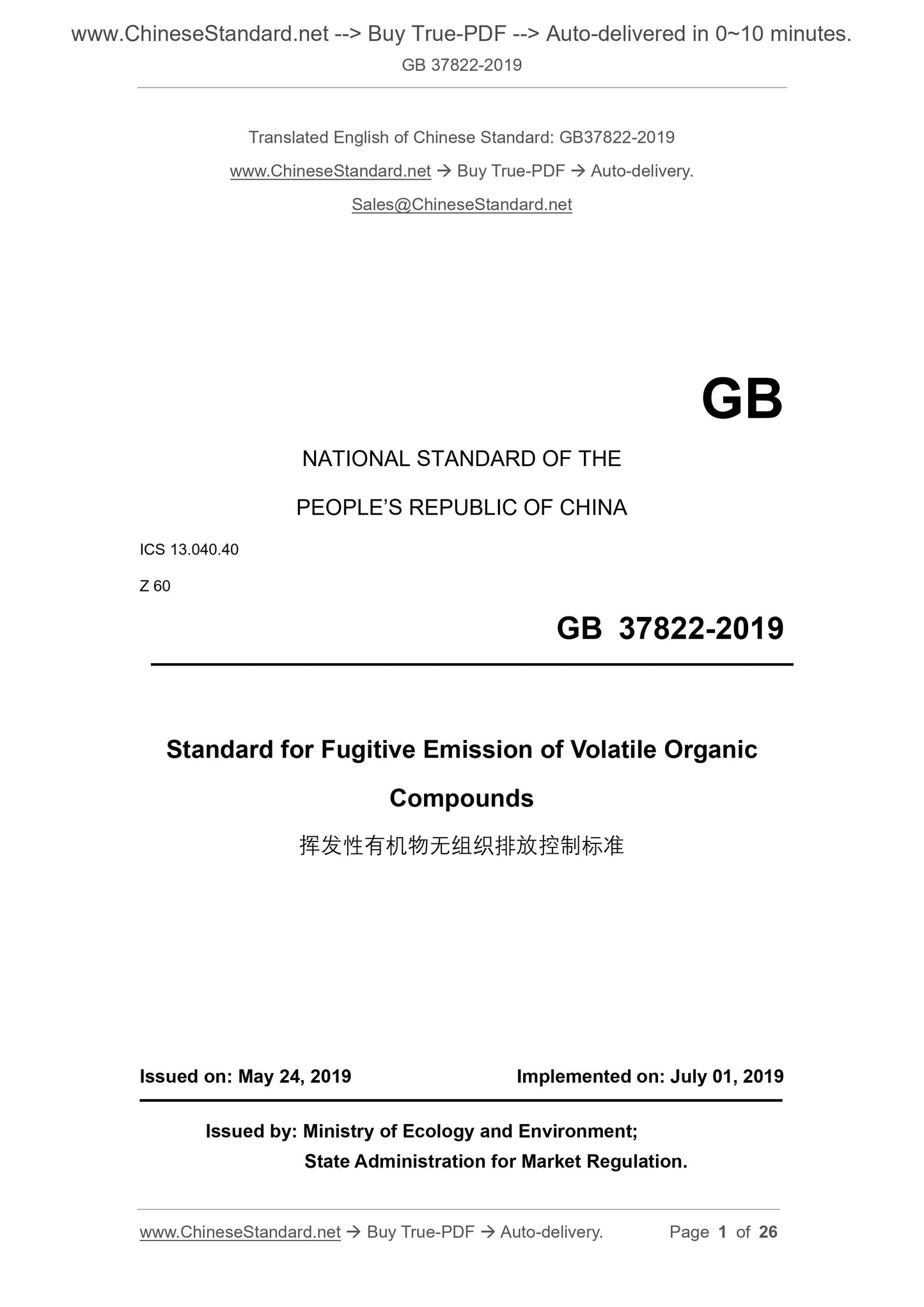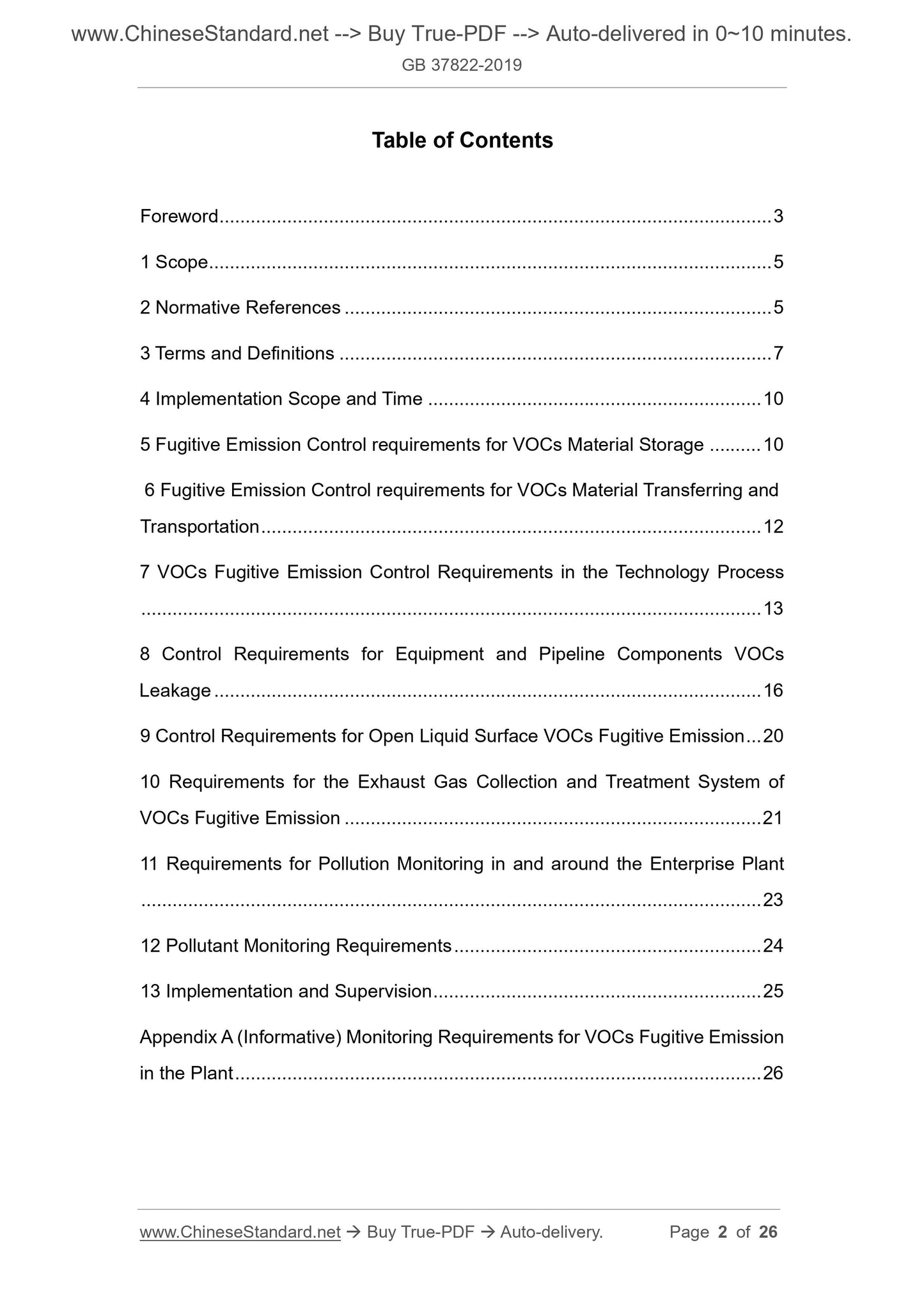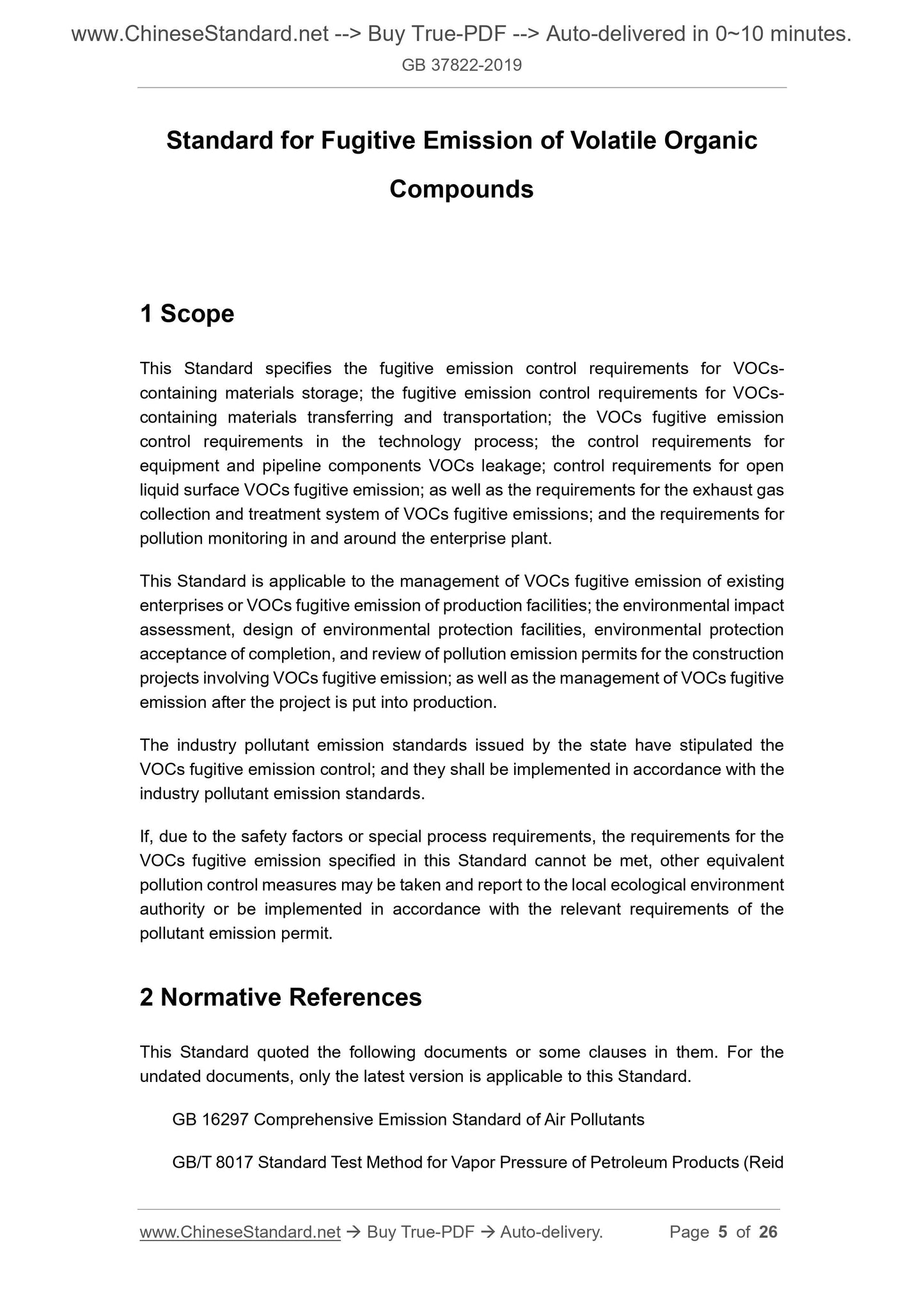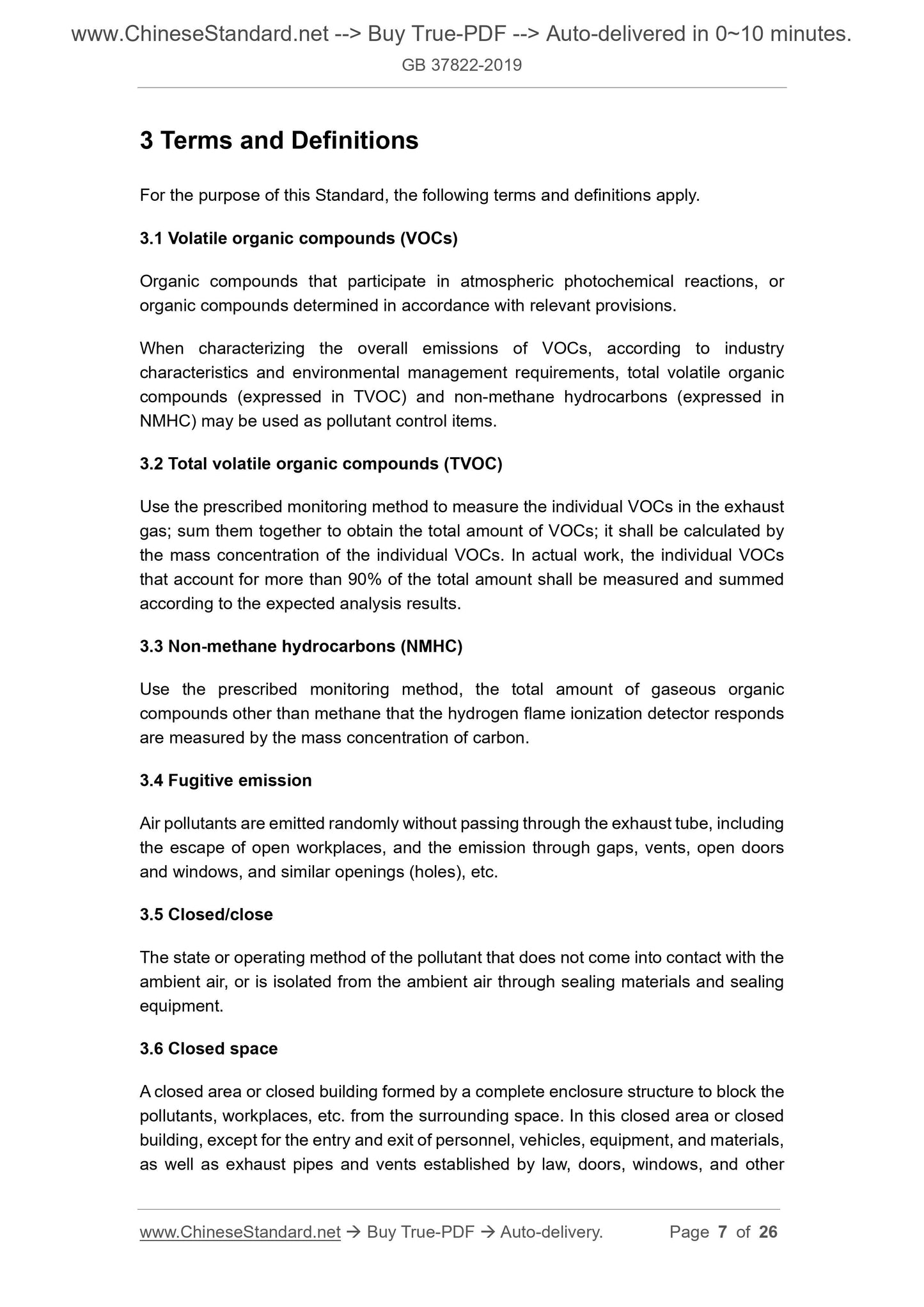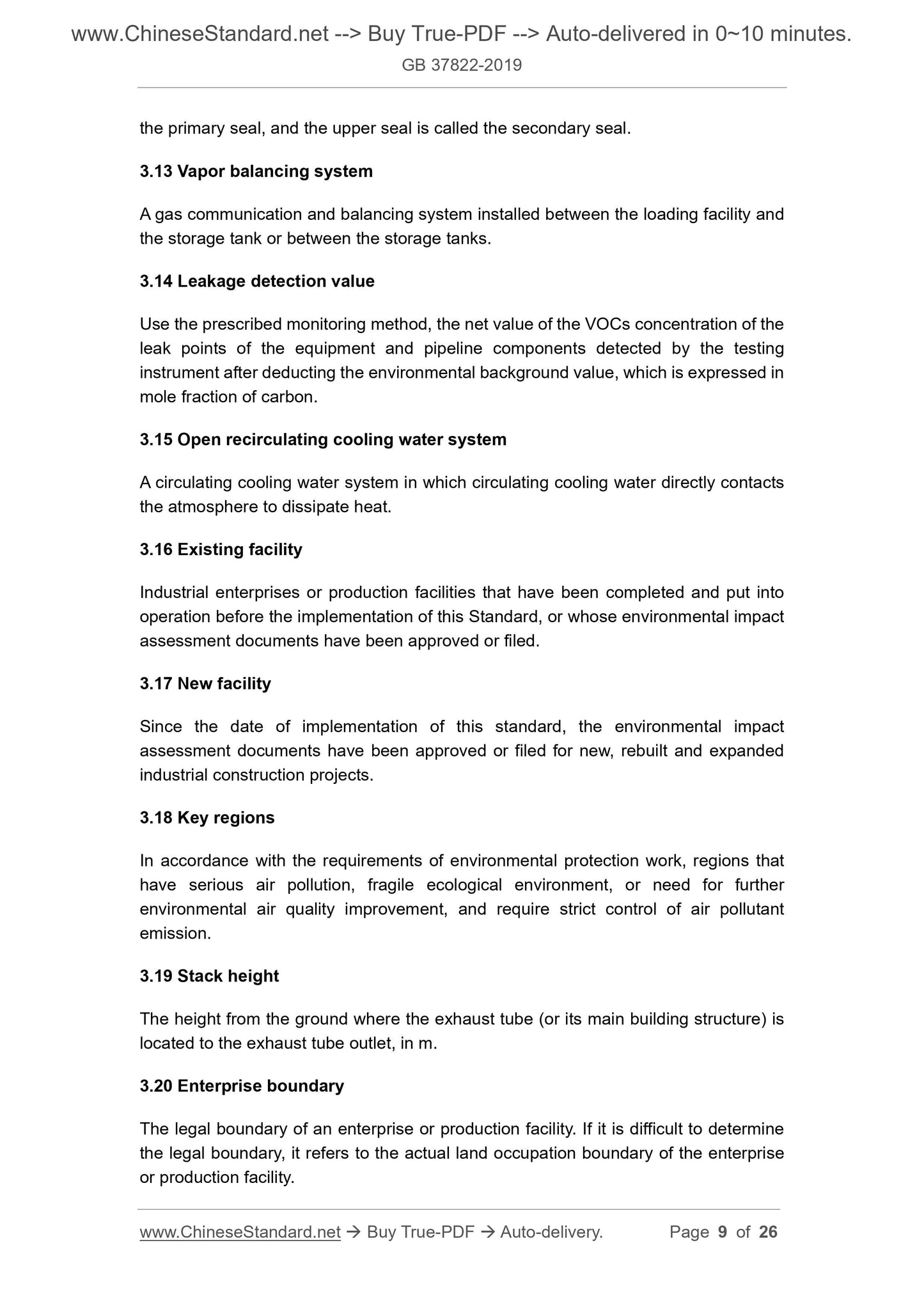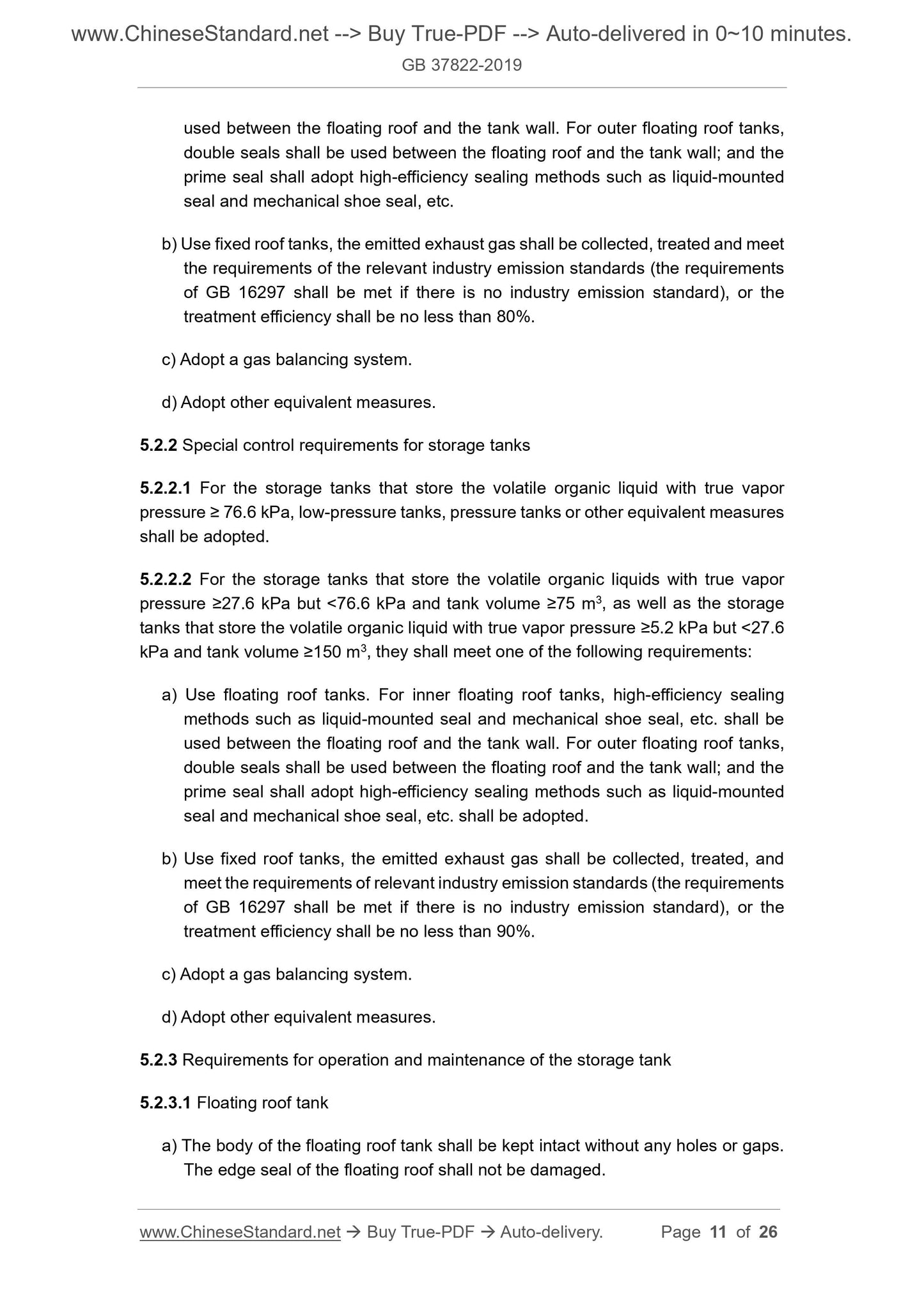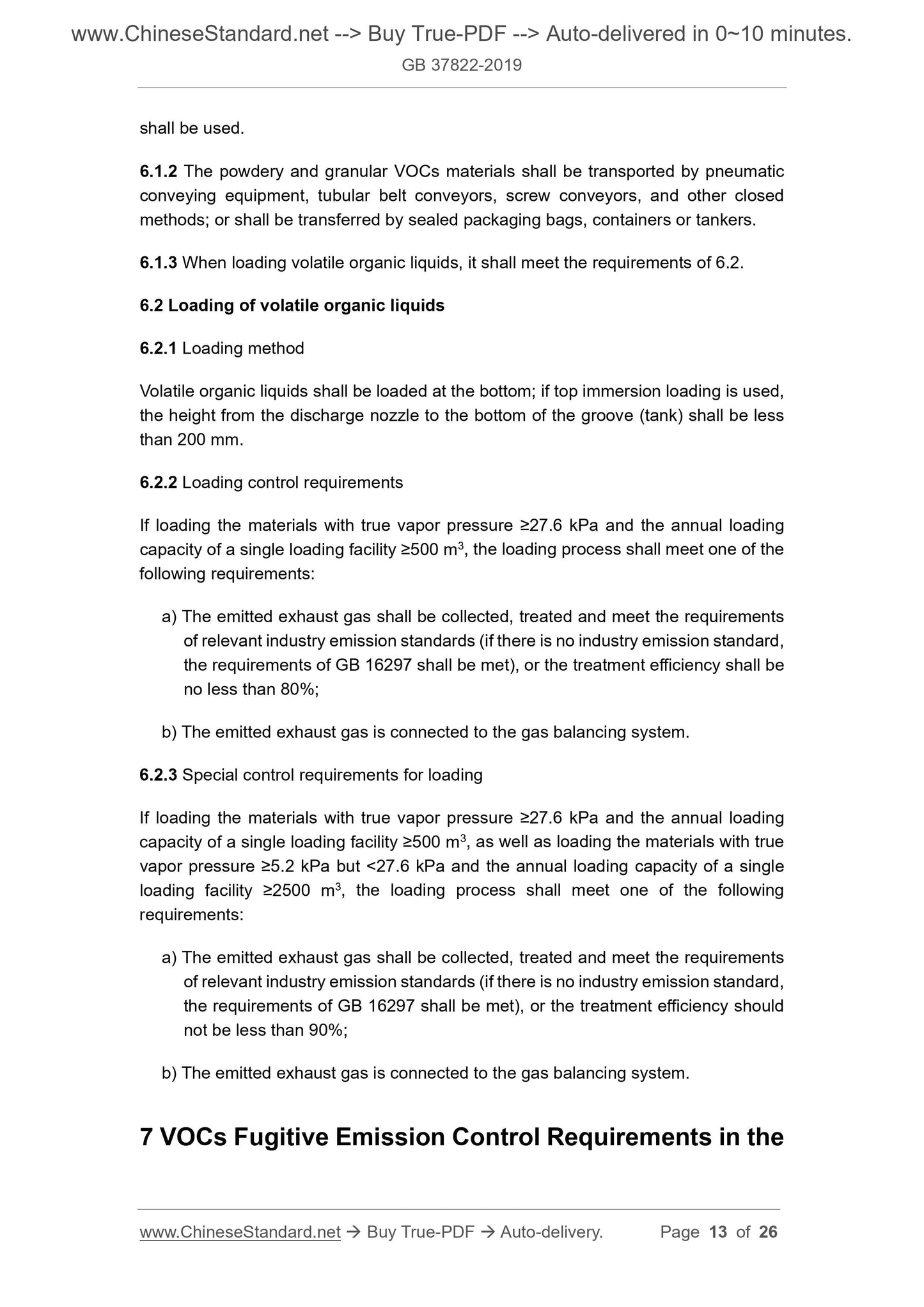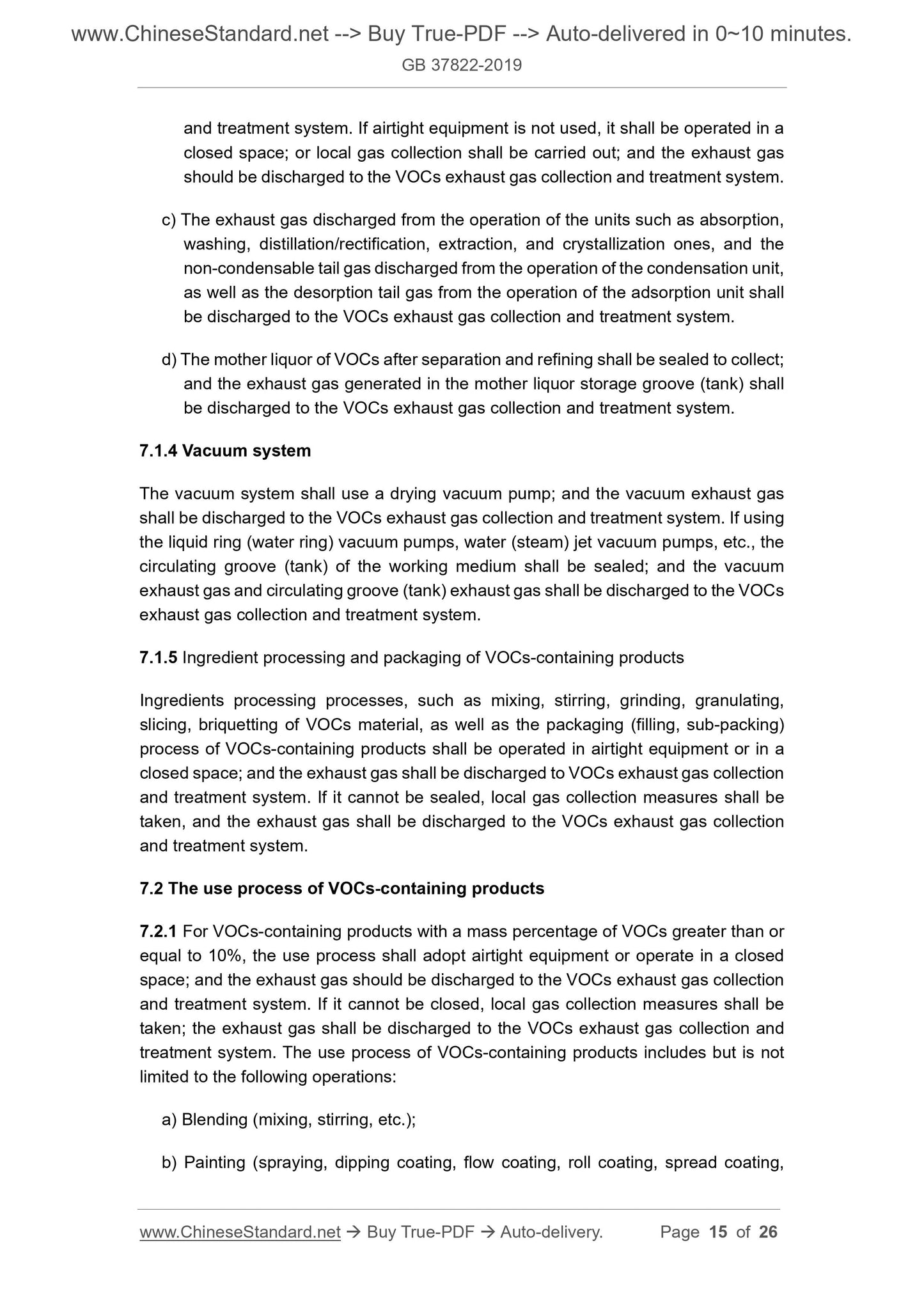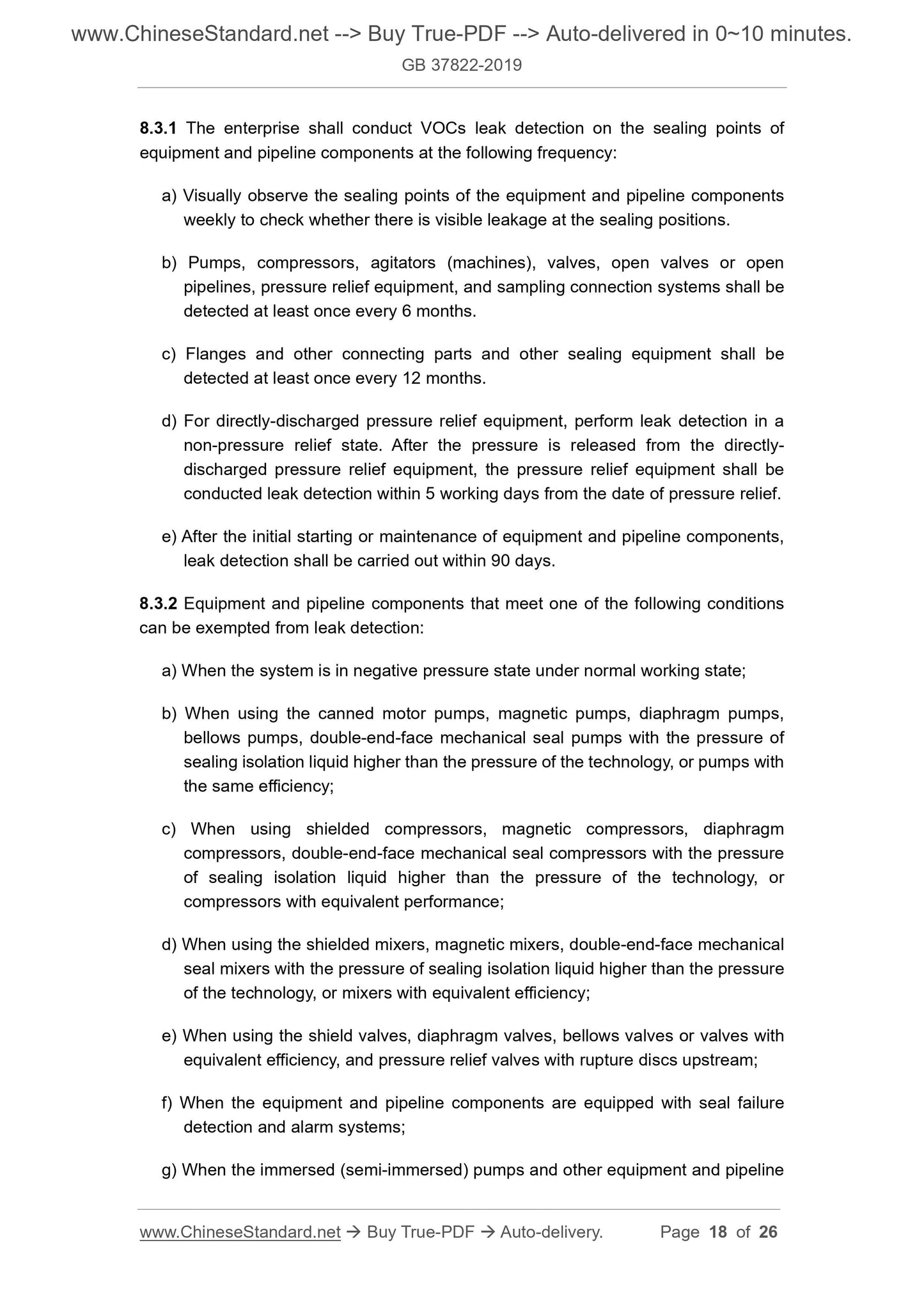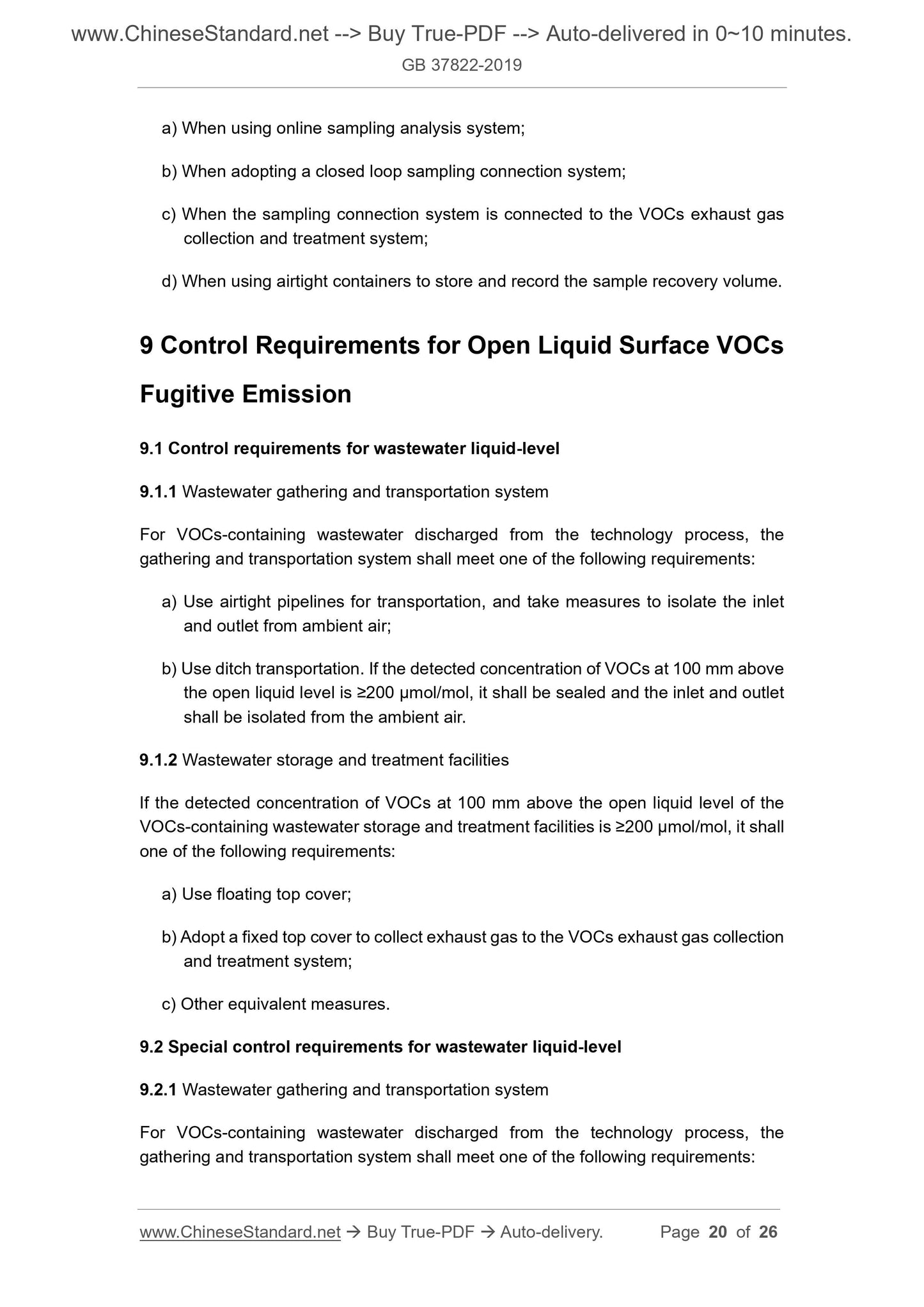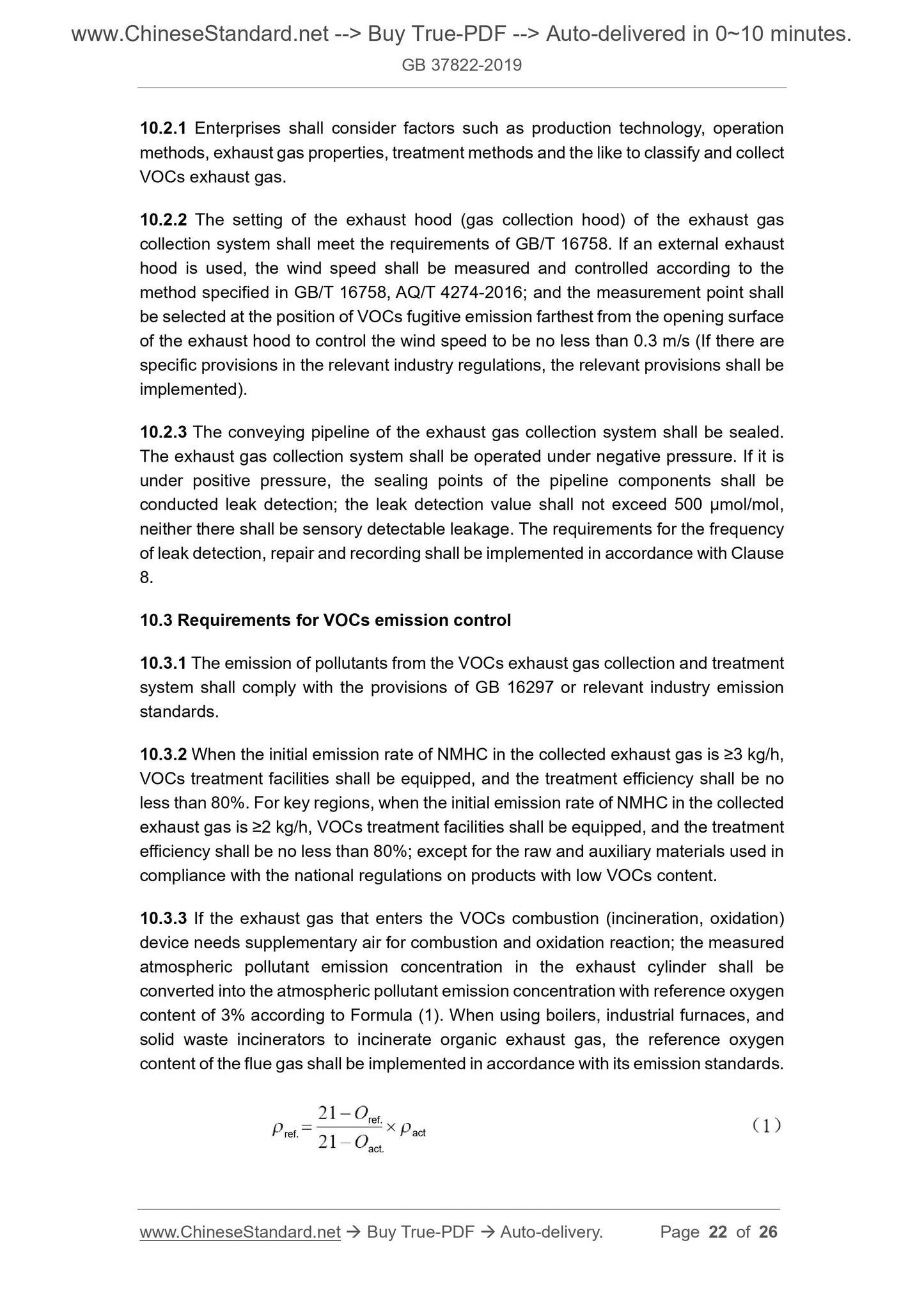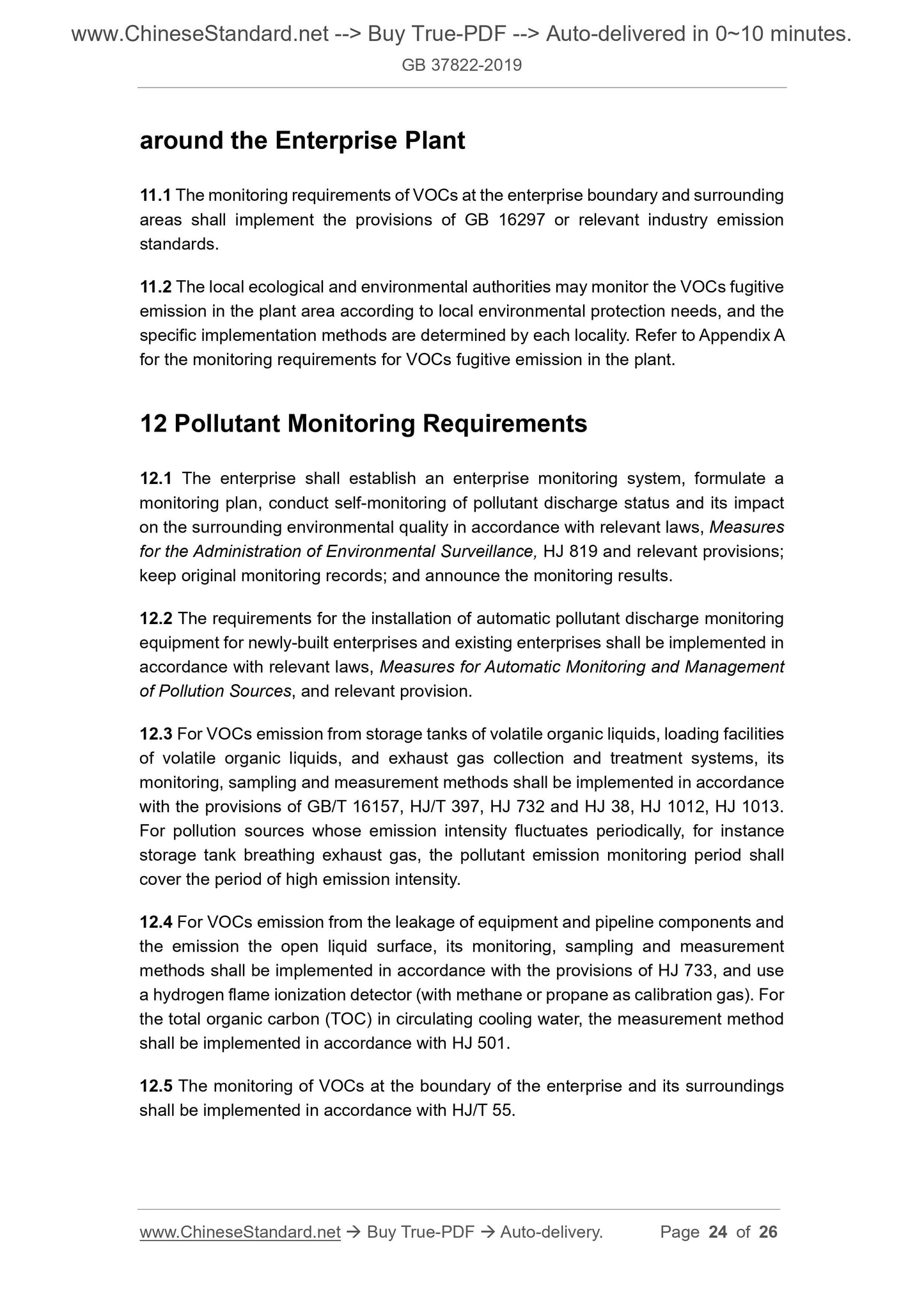1
/
of
12
www.ChineseStandard.us -- Field Test Asia Pte. Ltd.
GB 37822-2019 English PDF
GB 37822-2019 English PDF
Regular price
$225.00
Regular price
Sale price
$225.00
Unit price
/
per
Shipping calculated at checkout.
Couldn't load pickup availability
GB 37822-2019: Standard for Fugitive Emission of Volatile Organic Compounds
Delivery: 9 seconds. Download (and Email) true-PDF + Invoice.Get Quotation: Click GB 37822-2019 (Self-service in 1-minute)
Newer / historical versions: GB 37822-2019
Preview True-PDF
Scope
This Standard specifies the fugitive emission control requirements for VOCs-containing materials storage; the fugitive emission control requirements for VOCs-
containing materials transferring and transportation; the VOCs fugitive emission
control requirements in the technology process; the control requirements for
equipment and pipeline components VOCs leakage; control requirements for open
liquid surface VOCs fugitive emission; as well as the requirements for the exhaust gas
collection and treatment system of VOCs fugitive emissions; and the requirements for
pollution monitoring in and around the enterprise plant.
This Standard is applicable to the management of VOCs fugitive emission of existing
enterprises or VOCs fugitive emission of production facilities; the environmental impact
assessment, design of environmental protection facilities, environmental protection
acceptance of completion, and review of pollution emission permits for the construction
projects involving VOCs fugitive emission; as well as the management of VOCs fugitive
emission after the project is put into production.
The industry pollutant emission standards issued by the state have stipulated the
VOCs fugitive emission control; and they shall be implemented in accordance with the
industry pollutant emission standards.
If, due to the safety factors or special process requirements, the requirements for the
VOCs fugitive emission specified in this Standard cannot be met, other equivalent
pollution control measures may be taken and report to the local ecological environment
authority or be implemented in accordance with the relevant requirements of the
pollutant emission permit.
Basic Data
| Standard ID | GB 37822-2019 (GB37822-2019) |
| Description (Translated English) | Standard for Fugitive Emission of Volatile Organic Compounds |
| Sector / Industry | National Standard |
| Classification of Chinese Standard | Z60 |
| Classification of International Standard | 13.040.40 |
| Word Count Estimation | 15,143 |
| Date of Issue | 2019-07-29 |
| Date of Implementation | 2019-07-01 |
| Issuing agency(ies) | State Administration for Market Regulation, China National Standardization Administration |
Share
